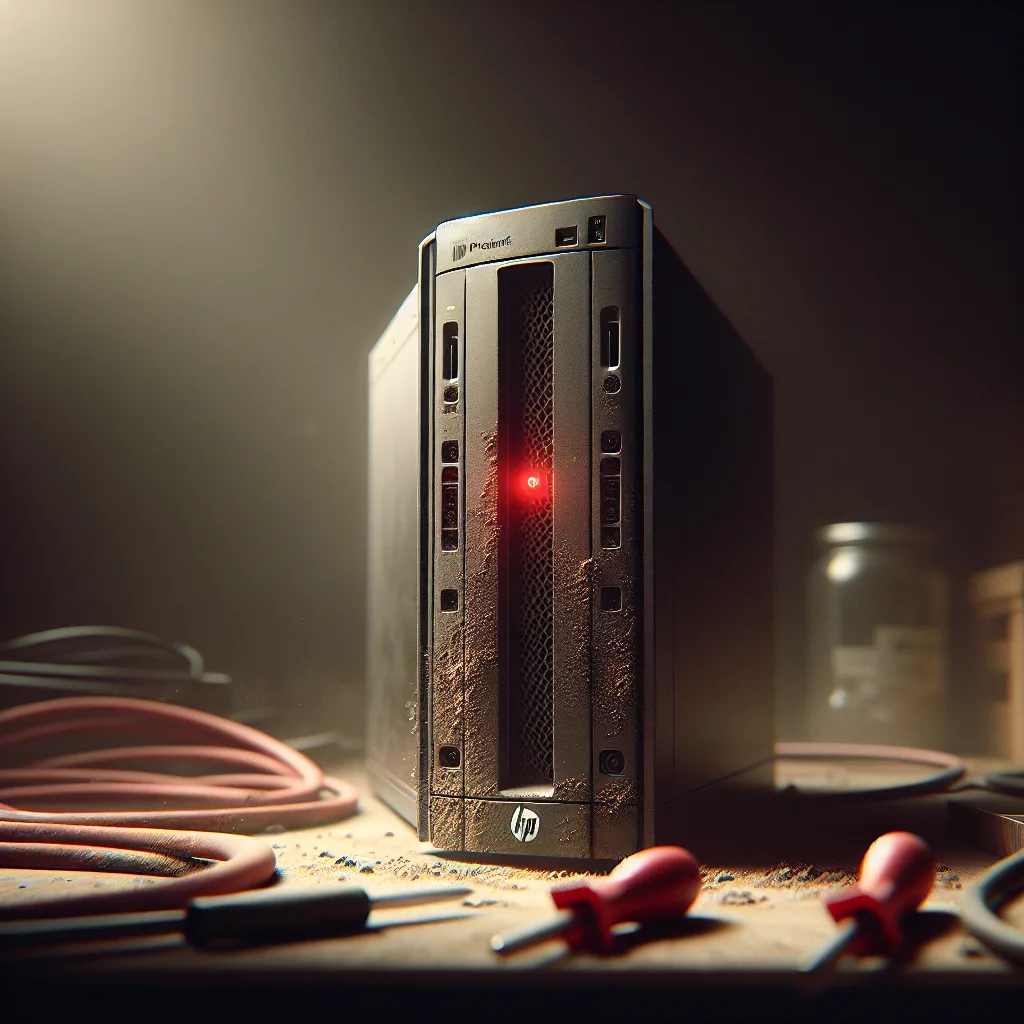Facing the ‘Unrecoverable System Error (NMI)’ on your HP ProLiant server? Here’s a step-by-step guide to diagnosing and fixing this frustrating issue.
I was so excited. I’d just gotten my hands on an HP ProLiant MicroServer Gen8. If you’re a home lab enthusiast, you know this little box is a legend. It’s compact, capable, and the perfect foundation for building a new setup. My plan was to run Debian 12 on it, maybe for a NAS, maybe for some containers. The possibilities felt endless.
I got everything set up, installed a fresh copy of Debian, and let it idle. For the first day, everything was perfect. And then, it wasn’t.
I walked over to the server to find the screen frozen. The cursor wasn’t blinking. Nothing. Even worse, the “Health LED” on the front was blinking a menacing red.
My heart sank. The red light of doom.
Chasing Ghosts in the Logs
Thankfully, HP servers have iLO (Integrated Lights-Out), a fantastic tool that lets you manage the server remotely, even when it’s powered off or frozen. I logged into the iLO web interface and checked the “Integrated Management Log.”
And there it was, in black and white:
Unrecoverable System Error (NMI) has occurred.
Right below it, another entry:
User Initiated NMI Switch
NMI stands for Non-Maskable Interrupt. In simple terms, it’s a hardware error so critical that the system can’t just ignore it. It’s the equivalent of your computer’s hardware screaming, “STOP EVERYTHING! Something is seriously wrong.”
The “User Initiated” part was just weird. I certainly hadn’t pressed any magic NMI button (which, by the way, is a real thing on some servers for forcing a crash dump). It felt like the server was freezing and then blaming me for it.
The First Suspect
My first thought went to the newest component I’d added: a cheap SAS card I’d bought from AliExpress. It was an Inspur 9211-8i, which I was hoping to use for connecting a bunch of large hard drives. It seemed like the most likely culprit.
So, I pulled the card out.
I reinstalled a fresh copy of Debian 12 on an SSD connected to the server’s built-in ports and let it run. For about 24 hours, things were quiet. I thought I’d fixed it.
Then, the red light started blinking again. Same freeze. Same NMI error in the logs.
It wasn’t the SAS card. The problem was deeper.
What Could It Be? A Process of Elimination
This is the part of any troubleshooting process that can be either fun or maddening. You have to work through the possibilities, one by one.
Here was my thinking:
- It happens with the OS running. I noticed the server was stable if it was just sitting in the BIOS or stuck in a boot loop without an OS drive. The NMI error only happened after Debian was up and running for a day or two. This meant it was likely an issue with the OS interacting with a piece of faulty or incompatible hardware.
- It’s not the storage controller. I’d ruled out the add-in SAS card, and the problem still happened with an SSD on the internal controller. While a bad SAS cable could theoretically cause issues, it felt less likely to be the root cause of such a critical system halt.
- So, what’s left? The core components. The CPU and the RAM.
The CPU was a Xeon E3-1220L V2, a solid processor for this machine. While not impossible, a CPU failure is relatively rare.
That left the RAM. I was using two sticks of DDR3 ECC memory. The specs were correct, but it was non-HP branded RAM. And with servers, especially older ones like the Gen8, that can be a big deal. They can be incredibly picky about memory. Even if the specs—ECC, speed, voltage—all match, a tiny incompatibility in the module’s design can cause bizarre, intermittent errors just like this.
The Path to a Solution
An NMI error is almost always a hardware problem. While a software or driver bug can trigger it, the root cause lies in the physical components. Based on my experience, here’s the checklist I’d recommend to anyone facing this exact problem.
- Test Your Memory First. This is the number one suspect. Don’t just assume your RAM is good because it seems to work for a while. Download MemTest86+ and let it run for a full 24 hours. Intermittent RAM faults often don’t show up in a quick 1-hour test. If you can, beg, borrow, or buy a single stick of official HP-branded RAM for this server and see if the system is stable. If it is, you’ve found your culprit.
- Strip It Down. Go back to basics. Disconnect everything that isn’t absolutely essential. Run the server with just the CPU, one stick of RAM, and your boot drive. If the system is stable for a few days, start adding components back one at a time, with a few days of testing in between each addition.
- Check Your Temperatures. Use iLO to keep an eye on the system and CPU temperatures. Overheating can absolutely cause the system to trigger a protective NMI and shut down. Make sure your fans are spinning and the heatsinks are free of dust.
- Reseat Everything. It sounds too simple, but it works surprisingly often. Power down the server, unplug it, and physically remove and reseat the CPU, the RAM, and all power and data cables. A slightly loose connection can cause chaos.
For me, the journey was a reminder that when you’re building with used or non-certified hardware, you’re sometimes in for an adventure. These cryptic errors aren’t just a roadblock; they’re a puzzle. And while it was frustrating, solving it piece by piece is what makes running a home lab so rewarding. The server isn’t just a tool—it’s a project.
